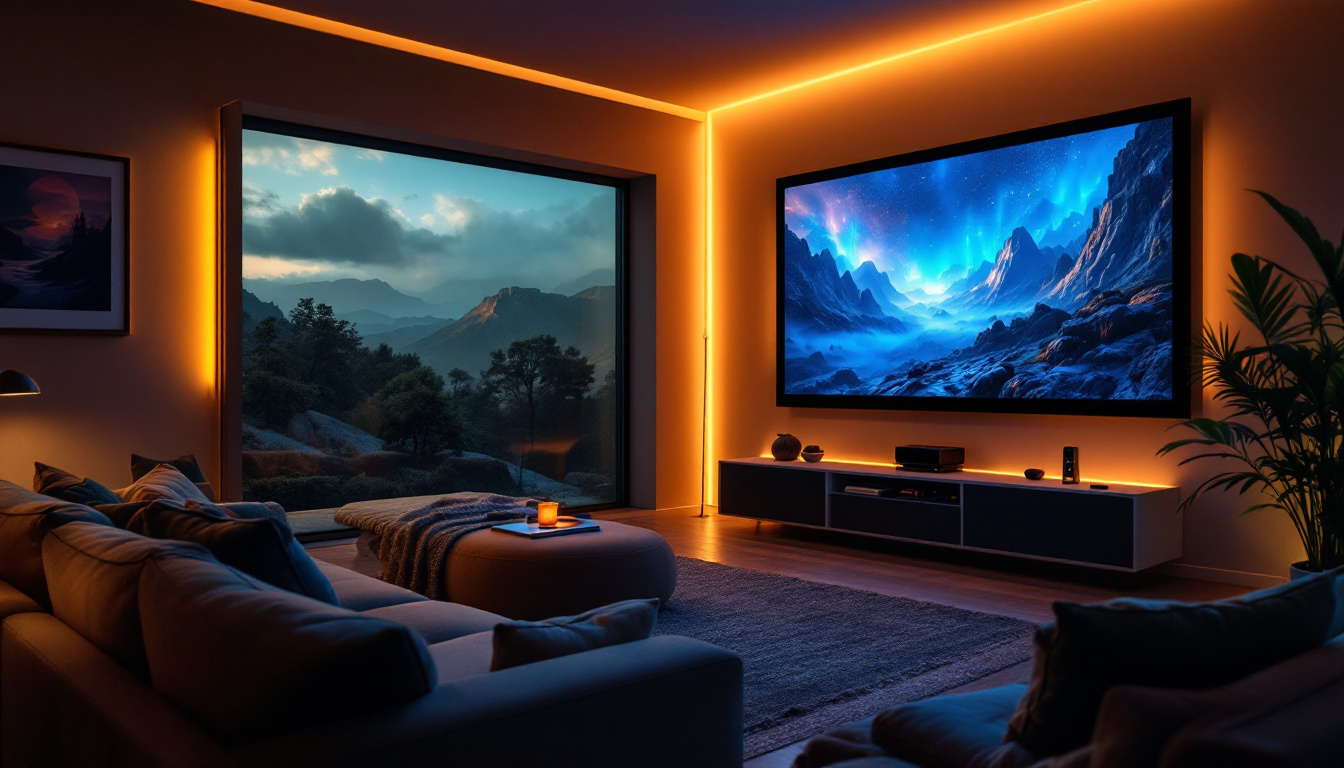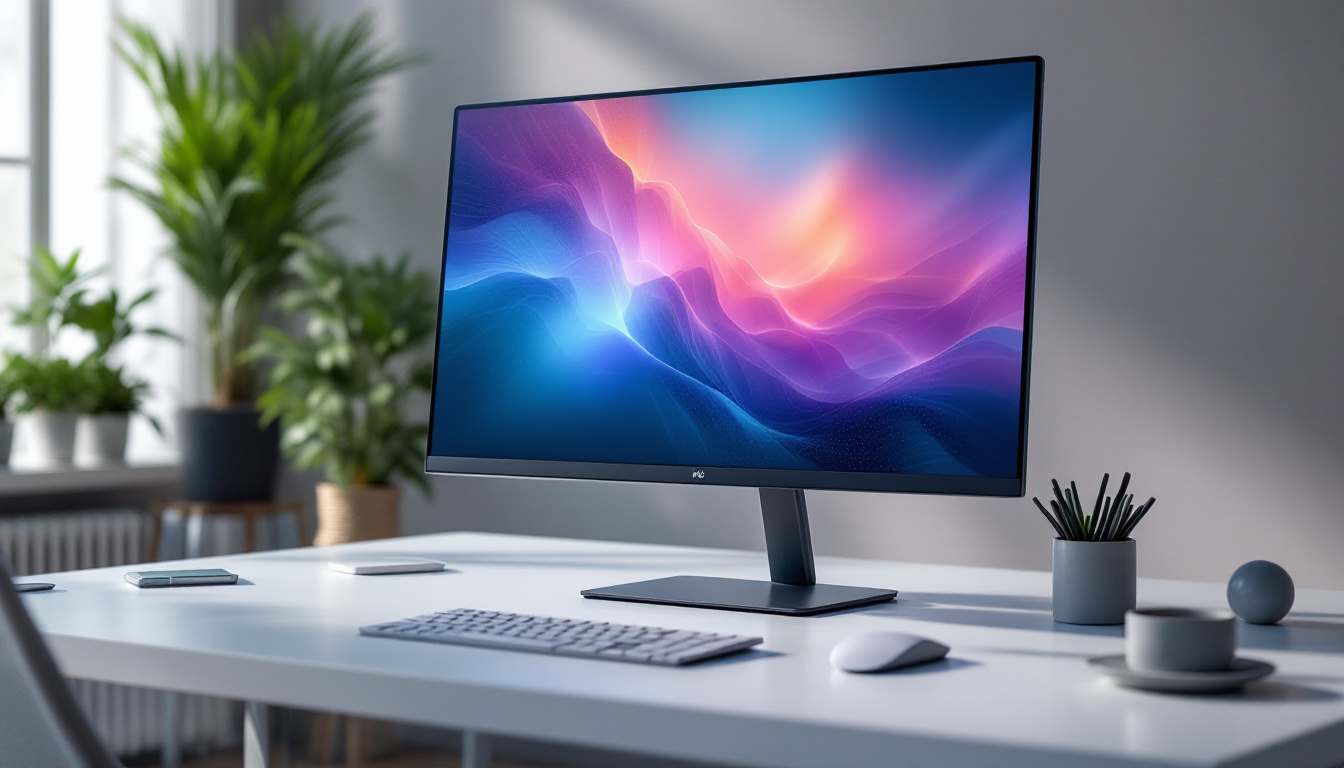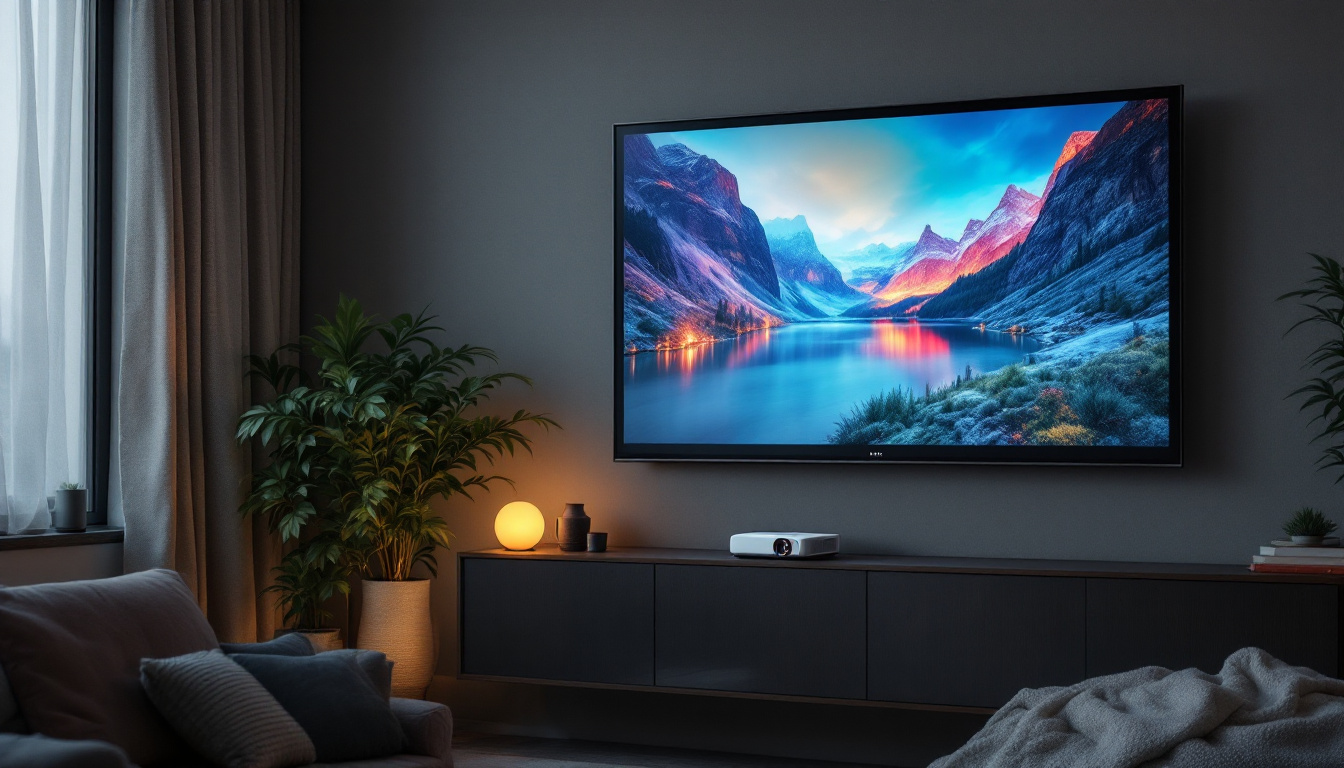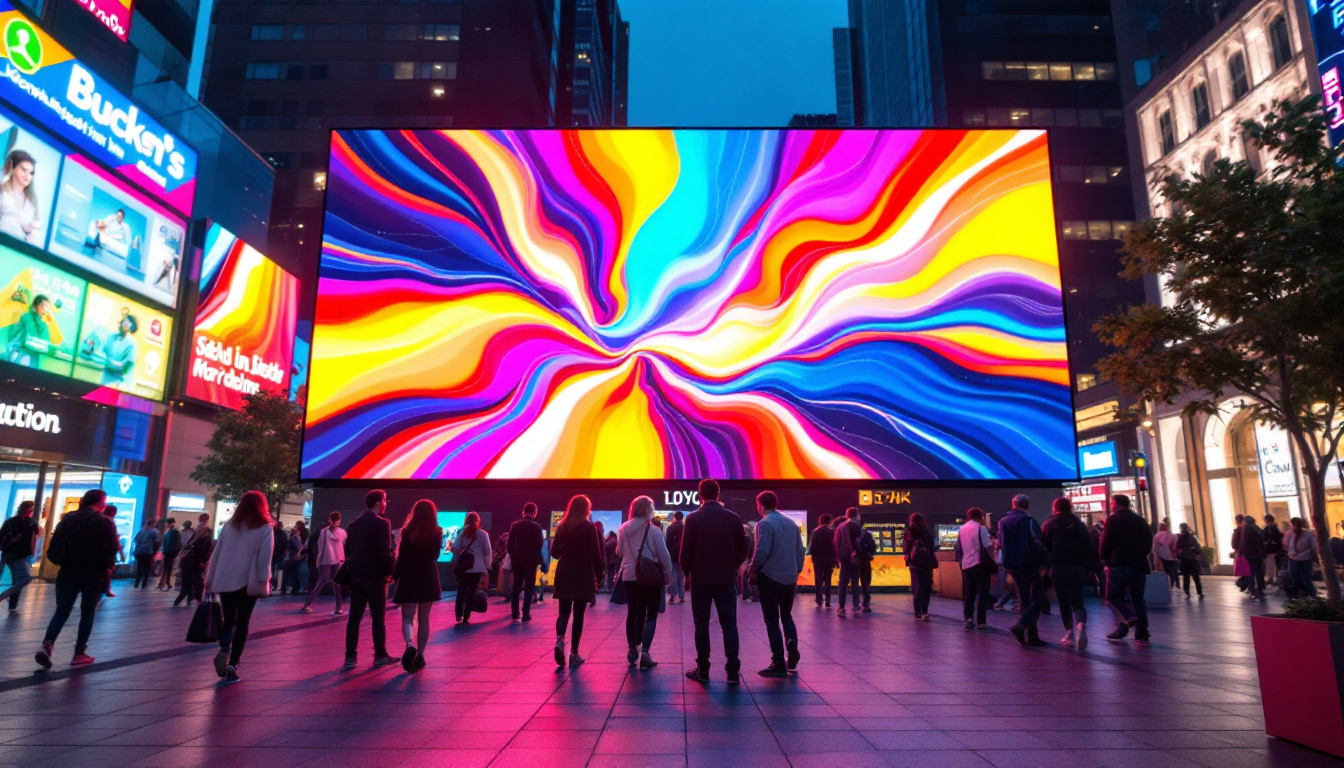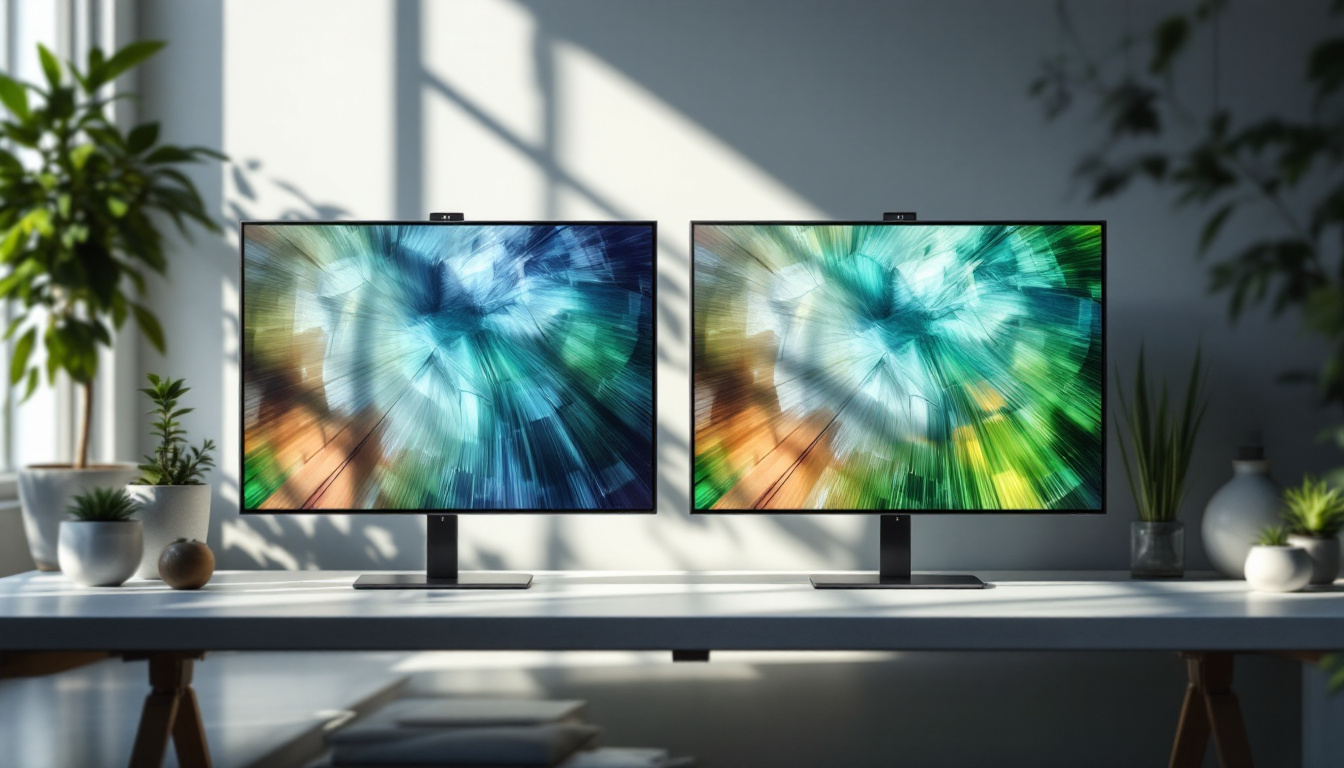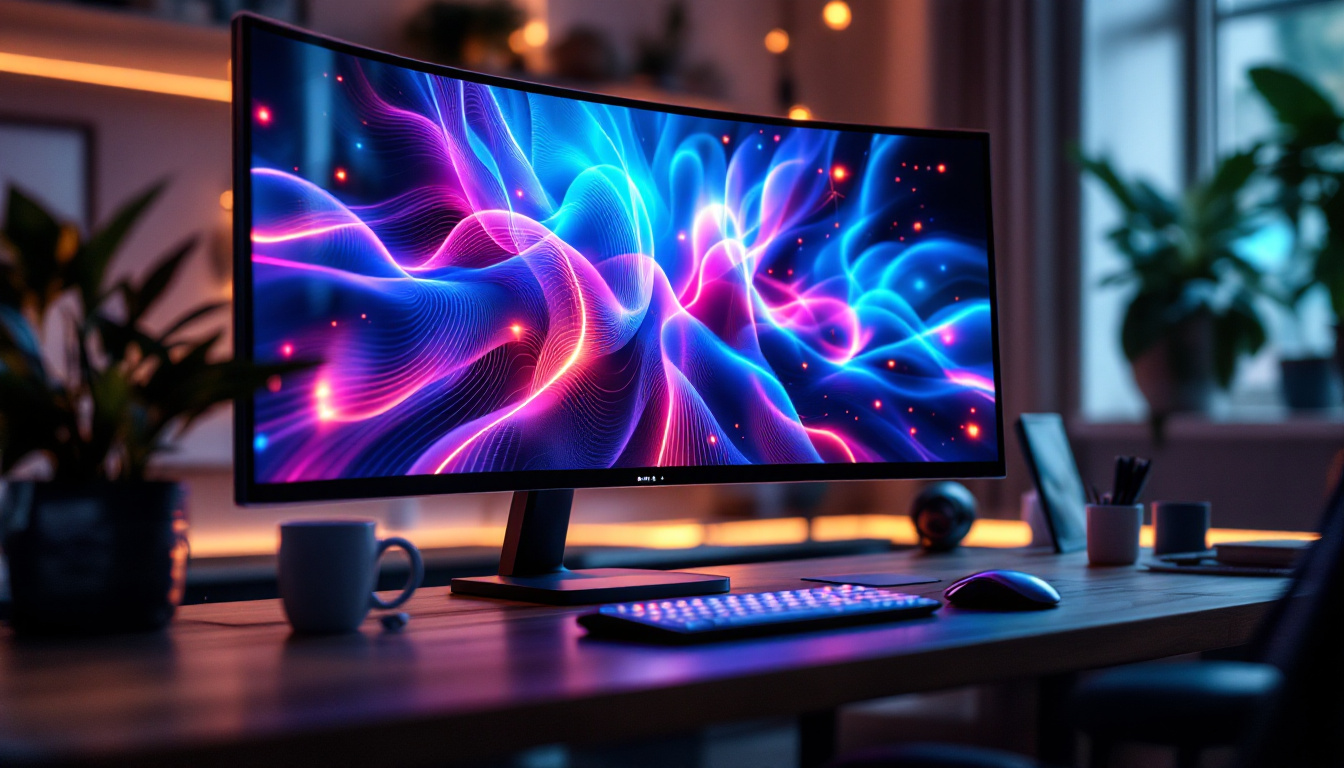How LCD Monitor Works: LED Display Explained
In the realm of modern technology, LCD (Liquid Crystal Display) monitors have become a staple in both personal and professional environments. Their ability to deliver vibrant colors and sharp images has made them a popular choice for everything from gaming to graphic design. But how exactly do these monitors function? This article delves into the intricacies of LCD technology, with a special focus on LED backlighting, to provide a comprehensive understanding of how these displays work.
Understanding LCD Technology
At its core, an LCD monitor operates by manipulating light through liquid crystals. Unlike traditional cathode-ray tube (CRT) monitors, which rely on electron beams to illuminate phosphors, LCDs utilize a more efficient method that results in thinner and lighter displays. This efficiency not only contributes to a sleeker design but also reduces power consumption, making LCDs a more environmentally friendly option compared to their CRT predecessors.
The Basics of Liquid Crystals
Liquid crystals are unique substances that possess properties of both liquids and solids. In an LCD, these crystals are sandwiched between two layers of glass or plastic. When an electric current is applied, the orientation of the liquid crystals changes, allowing varying amounts of light to pass through. This modulation of light is what creates the images seen on the screen. The technology behind liquid crystals has evolved significantly, leading to advancements in display quality and response times, which are critical for applications ranging from gaming to professional graphic design.
The arrangement of these crystals is crucial. Depending on the type of LCD technology used—such as Twisted Nematic (TN), In-Plane Switching (IPS), or Vertical Alignment (VA)—the performance characteristics, such as color accuracy and viewing angles, can vary significantly. For instance, IPS panels are renowned for their superior color reproduction and wider viewing angles, making them ideal for tasks that require precise color accuracy, such as photo editing and video production. Conversely, TN panels tend to offer faster response times, which can be advantageous in fast-paced gaming environments.
How Pixels Are Formed
Each pixel on an LCD screen is composed of subpixels, typically red, green, and blue (RGB). By adjusting the intensity of each subpixel, a wide spectrum of colors can be produced. The combination of these colors at varying intensities results in the full-color images that users see. This RGB model is foundational to digital displays, allowing for the creation of millions of colors through additive color mixing, where different intensities of light combine to form new hues.
When a specific color is required, the liquid crystals align in a manner that allows the appropriate amount of light to pass through each subpixel. This precise control over light and color is what makes LCD monitors capable of displaying detailed and vibrant images. Furthermore, modern LCDs often incorporate additional technologies, such as backlighting and color calibration, to enhance the viewing experience. For instance, LED backlighting has become the standard for many LCDs, providing brighter displays with improved contrast ratios, while advanced calibration tools help ensure that colors are rendered accurately across different devices and environments.
The Role of Backlighting
One of the most significant advancements in LCD technology is the introduction of LED (Light Emitting Diode) backlighting. Traditional LCDs used cold cathode fluorescent lamps (CCFLs) for illumination, but LED backlighting has since become the standard due to its numerous advantages.
Types of LED Backlighting
There are primarily two types of LED backlighting used in LCD monitors: edge-lit and full-array. Each type has its own set of benefits and drawbacks.
Edge-lit LED displays have LEDs positioned along the edges of the screen. This design allows for thinner monitors but can lead to uneven brightness and contrast, especially in larger displays. On the other hand, full-array LED backlighting features a grid of LEDs placed behind the entire screen. This arrangement provides more uniform brightness and better contrast ratios, making it ideal for high-quality displays.
Benefits of LED Backlighting
LED backlighting offers several advantages over traditional CCFL technology. First and foremost, LEDs are more energy-efficient, consuming less power and generating less heat. This efficiency not only reduces electricity bills but also contributes to a longer lifespan for the monitor.
Additionally, LED backlighting allows for improved color accuracy and contrast. Many monitors now feature technologies like local dimming, which enables specific zones of the display to be dimmed or brightened independently. This results in deeper blacks and more vibrant colors, enhancing the overall viewing experience.
How LCD Monitors Process Images
The process of displaying an image on an LCD monitor involves several steps, from signal input to final output. Understanding this process can shed light on how various factors affect display quality.
Signal Input and Processing
When a computer or device sends a signal to the monitor, it typically comes in the form of digital data. This data is processed by the monitor’s internal circuitry, which interprets the information and converts it into a format suitable for display. This conversion process is crucial, as it determines how accurately the monitor can reproduce the original image.
Modern monitors often include advanced image processing technologies that enhance sharpness, reduce motion blur, and improve overall image quality. These features are particularly beneficial for fast-paced content, such as video games and action movies.
Refresh Rate and Response Time
Two critical specifications that impact the performance of an LCD monitor are refresh rate and response time. The refresh rate, measured in hertz (Hz), indicates how many times per second the monitor updates the displayed image. A higher refresh rate results in smoother motion, which is especially important for gaming and video playback.
Response time, on the other hand, refers to how quickly a pixel can change from one color to another. A lower response time minimizes motion blur and ghosting effects, making it essential for fast-moving images. Monitors designed for gaming often prioritize these specifications to deliver a superior experience.
Color Calibration and Accuracy
Color accuracy is a vital aspect of LCD monitors, particularly for professionals in fields such as graphic design, photography, and video editing. Proper calibration ensures that the colors displayed on the monitor closely match the intended output.
The Importance of Calibration
Calibration involves adjusting the monitor’s settings to achieve accurate color reproduction. This process can be performed manually or with the assistance of calibration tools. Many high-end monitors come with factory calibration, but user calibration can further enhance accuracy.
Factors such as ambient lighting, monitor age, and individual preferences can all influence the perceived color accuracy. Regular calibration helps maintain consistent performance over time, ensuring that the monitor continues to deliver reliable results.
Color Gamut and Coverage
The color gamut refers to the range of colors that a monitor can reproduce. Different monitors may cover various color spaces, such as sRGB, Adobe RGB, or DCI-P3. Understanding the color gamut is essential for users who require precise color representation.
Monitors with a wider color gamut can display more vibrant and diverse colors, making them ideal for creative professionals. However, for everyday use, a standard sRGB coverage is often sufficient.
Common Issues and Troubleshooting
Despite their many advantages, LCD monitors can experience various issues over time. Understanding these common problems and their solutions can help users maintain optimal performance.
Screen Flickering
Screen flickering can be a frustrating issue, often caused by a mismatch between the monitor’s refresh rate and the graphics card’s output. To resolve this, users can adjust the refresh rate settings in the operating system or update graphics drivers.
In some cases, flickering may be related to hardware issues, such as a failing power supply or faulty cables. Inspecting connections and replacing damaged components can often rectify the problem.
Dead or Stuck Pixels
Dead or stuck pixels are another common issue, where individual pixels fail to display the correct color. While dead pixels are permanent, stuck pixels may sometimes be fixed through software solutions or gentle pressure on the screen. However, users should exercise caution to avoid further damage.
Many manufacturers offer warranties that cover dead pixels, so checking the warranty policy can be beneficial for affected users.
Future of LCD Technology
As technology continues to evolve, so too does the landscape of LCD displays. Innovations in materials and manufacturing processes are paving the way for even better performance and efficiency.
Emerging Technologies
One of the most exciting developments in LCD technology is the integration of quantum dots. Quantum dot displays promise to enhance color accuracy and brightness, providing a more immersive viewing experience. This technology works by using nanometer-sized semiconductor particles that emit specific colors when illuminated.
Additionally, advancements in flexible displays are opening new possibilities for LCD technology. Flexible screens can be bent and shaped, allowing for innovative designs in consumer electronics. As manufacturers continue to explore these avenues, the future of LCD monitors looks promising.
Environmental Considerations
As awareness of environmental issues grows, manufacturers are increasingly focusing on sustainability. Efforts to reduce energy consumption, utilize recyclable materials, and minimize waste during production are becoming more prevalent in the LCD industry.
Consumers are encouraged to consider the environmental impact of their electronic devices and opt for products that prioritize sustainability. This shift not only benefits the planet but also supports the development of greener technologies.
Conclusion
Understanding how LCD monitors work, particularly with LED backlighting, provides valuable insights into their functionality and advantages. From the manipulation of liquid crystals to the intricacies of color calibration, these displays represent a remarkable fusion of technology and design.
As advancements continue to shape the future of LCD technology, users can expect even more impressive performance, efficiency, and sustainability. Whether for gaming, professional work, or everyday use, LCD monitors will remain a vital component of the digital landscape.
Explore Cutting-Edge LED Displays with LumenMatrix
Now that you’ve gained insight into the sophisticated workings of LCD monitors and the transformative impact of LED backlighting, it’s time to experience the pinnacle of display technology with LumenMatrix. As a leader in LED innovation, LumenMatrix offers a diverse array of LED display modules designed to elevate your visual presence and captivate your audience. From Indoor and Outdoor LED Walls to specialized solutions like Vehicle and Sports Displays, each product is crafted to deliver unparalleled clarity and engagement. Discover how LumenMatrix is redefining visual communication and explore their full suite of LED display solutions to find the perfect fit for your needs. Check out LumenMatrix LED Display Solutions and see your message come to life like never before.


